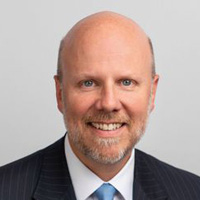Philanthropists Should Encourage Greater Giving – Not Force the Issue
Donor-advised funds have done a lot of people a lot of good, but some argue that the way they work needs to change. But why fix what isn’t broken?


What’s the most effective way to increase charitable giving? Billionaire energy trader John Arnold and his wife, Laura, recently offered one solution. They created the “Give While You Live” campaign, encouraging billionaires to donate a minimum of 5% of their wealth to charity every year.
The Arnolds are putting their money where their mouth is, which is commendable. And they’re not the only ones. Overall charitable giving in 2020 increased more than 10% over the previous year for donors of all income brackets.
For decades, household charitable giving has been stuck around 2% of a family’s adjusted gross income. To make gains, we need people like the Arnolds encouraging a sizable leap toward greater giving. They lead by example and, in so doing, inspire others to act in-kind.
From just $107.88 $24.99 for Kiplinger Personal Finance
Become a smarter, better informed investor. Subscribe from just $107.88 $24.99, plus get up to 4 Special Issues

Sign up for Kiplinger’s Free Newsletters
Profit and prosper with the best of expert advice on investing, taxes, retirement, personal finance and more - straight to your e-mail.
Profit and prosper with the best of expert advice - straight to your e-mail.
A Push for New Rules on How Charity Works
Yet John Arnold isn’t wedded to the “carrot” approach. He’s OK with sticks, too. He and Boston College law professor Ray Madoff are lobbying Congress and the Biden administration to force philanthropists using donor-advised funds (DAFs) to move up the timeline on grant payouts made from these charitable accounts.
Encouraging more philanthropy is critically important but involving the heavy hand of government to mandate payout timelines on DAFs is misguided, in my opinion. Independent philanthropic freedom is critical in a free society and should be preserved.
Arnold and Madoff, moreover, are trying to force sweeping changes to a financial vehicle that safeguards and optimizes a person’s charitable dollars. Why fix what isn’t broken? Instead, we should be celebrating all those who recommend such grants after thoughtful consideration of their own interests, timeline and charitable giving goals.
The past year of giving indicates that donors can and will engage to address problems, especially when massive problems – such as those created by a pandemic and economic crisis – make needs so evident.
DAFs serve as a charitable saving account for donors. There is value in having a rainy-day fund to draw from when times get tough. This past year, we’ve seen that promise play out (as we did, by the way, during the economic downturn of 2008 and 2009).
DAF payout rates are climbing. At more than 20% annually in recent years, DAF payout rates consistently dwarf payout rates of similar charitable vehicles and nearly doubled between 2019 and 2020 as COVID-19 wreaked havoc across the United States.
A Bad Rap for Donor Advised Funds
As Howard Husock, adjunct scholar at the American Enterprise Institute, writes, DAFs award “far more than the 5% which mega-foundations like Gates and Ford are required to disburse” and, as a result, should not be singled out for heavy-handed regulation.
Yet DAFs in particular have been wrongly criticized for years. This is often due to confusion over payout rates, anonymity and growing account balances, which some believe stems from donors taking an immediate tax deduction and then refraining from awarding grants right away.
People forget about the time value of money. As Husock discusses in a recent paper, funds in DAF accounts grow over time, enabling additional generosity. This optimizes a donor’s gift to his or her charity of choice on a timeline that works for the donor’s unique circumstances.
These charitable investment funds, effectively, are an essential financial stewardship tool. Put another way, the purpose of a DAF is to be actively charitable. “Warehousing” money in a DAF is a misnomer, as a DAF is inherently dynamic. Money doesn’t simply “sit” in a DAF — it generally grows in a DAF, and those funds can only be used for an operating charity.
Those with DAFs award grants at higher rates than those overseeing similar funds, and step up to the plate even more during times of crisis, as evidenced by giving trends throughout 2020. The payout rate at DonorsTrust in 2020, for example, was closer to 60%.
Allies of the Arnolds have created additional campaigns, proposed mandates and other initiatives to increase and encourage giving, as well as significantly alter the rules around DAFs. These plans, however, offer a solution in search of a problem.
New Mandates Sought
Despite the proof from 2020 that Americans are happy to give voluntarily, the conversation centered on increasing overall giving continues to include calls for new mandates. Another way to look at it, some groups simply want “more money” from citizen givers.
The Initiative to Accelerate Charitable Giving, the formal name for the Arnold/Madoff proposal, for example, has made efforts to weaken philanthropic freedom through new mandates on private foundations and DAFs to spend their money faster or face punitive measures. For a more detailed discussion about these mendates, visit the Philanthropy Roundtable blog to hear from other subject matter experts.
Mandatory volunteerism is a bit of an oxymoron. Instead, let’s celebrate the diversity of giving inherent in Americans instead of forcing a one-size-fits-all framework on donors.
Inspiring charitable giving through actions is a commendable sort of leadership. Rather than overreach and discourage philanthropy, we should encourage both the wealthy and those of lesser means to give more money the right way.
Especially now, as we emerge into a post-pandemic world, the economic damage of the past 18 months continues to wreak havoc on families in a deeply personal way. We should be praising those who continue to give charitably – regardless of how they do it – rather than succumbing to mandates by those who think they know best how to spend other people’s charitable dollars.
Profit and prosper with the best of Kiplinger's advice on investing, taxes, retirement, personal finance and much more. Delivered daily. Enter your email in the box and click Sign Me Up.

Lawson Bader has served as president and CEO of DonorsTrust since 2015. He has had 20 years' experience leading free-market research and advocacy groups, including the Competitive Enterprise Institute and the Mercatus Center. DonorsTrust is a community foundation safeguarding the intent of accountholders who seek to promote charities that address civic concerns, are mostly privately funded, do not increase the size and scope of government, and promote free enterprise and personal responsibility.
-
 CD Maturing Soon? Here's What to Do Next
CD Maturing Soon? Here's What to Do NextThese strategies of what to do when you have a CD maturing soon will have you maximizing returns even with rate cuts.
-
 How to Make 2026 Your Best Year Yet for Retirement Savings
How to Make 2026 Your Best Year Yet for Retirement SavingsMake 2026 the year you stop coasting and start supercharging your retirement savings.
-
 You Saved for Retirement: 4 Pressing FAQs Now
You Saved for Retirement: 4 Pressing FAQs NowSaving for retirement is just one step. Now, you have to figure out how to spend and maintain funds. Here are four frequently asked questions at this stage.
-
 I'm a Financial Planning Pro: This Is How You Can Stop These 5 Risks From Wrecking Your Retirement
I'm a Financial Planning Pro: This Is How You Can Stop These 5 Risks From Wrecking Your RetirementYour retirement could be jeopardized if you ignore the risks you'll face later in life. From inflation to market volatility, here's what to prepare for.
-
 Are You Hesitating to Spend Money You've Spent Years Saving? Here's How to Get Over It, From a Financial Adviser
Are You Hesitating to Spend Money You've Spent Years Saving? Here's How to Get Over It, From a Financial AdviserEven when your financial plan says you're ready for a big move, it's normal to hesitate — but haven't you earned the right to trust your plan (and yourself)?
-
 Time to Close the Books on 2025: Don't Start the New Year Without First Making These Money Moves
Time to Close the Books on 2025: Don't Start the New Year Without First Making These Money MovesAs 2025 draws to a close, take time to review your finances, maximize tax efficiency and align your goals for 2026 with the changing financial landscape.
-
 Is Fear Blocking Your Desire to Retire Abroad? What to Know to Turn Fear Into Freedom
Is Fear Blocking Your Desire to Retire Abroad? What to Know to Turn Fear Into FreedomCareful planning encompassing location, income, health care and visa paperwork can make it all manageable. A financial planner lays it all out.
-
 How to Master the Retirement Income Trinity: Cash Flow, Longevity Risk and Tax Efficiency
How to Master the Retirement Income Trinity: Cash Flow, Longevity Risk and Tax EfficiencyRetirement income planning is essential for your peace of mind — it can help you maintain your lifestyle and ease your worries that you'll run out of money.
-
 I'm an Insurance Expert: Sure, There's Always Tomorrow to Report Your Claim, But Procrastination Could Cost You
I'm an Insurance Expert: Sure, There's Always Tomorrow to Report Your Claim, But Procrastination Could Cost YouThe longer you wait to file an insurance claim, the bigger the problem could get — and the more leverage you're giving your insurer to deny it.
-
 Could a Cash Balance Plan Be Your Key to a Wealthy Retirement?
Could a Cash Balance Plan Be Your Key to a Wealthy Retirement?Cash balance plans have plenty of benefits for small-business owners. For starters, they can supercharge retirement savings and slash taxes. Should you opt in?
-
 7 Retirement Planning Trends in 2025: What They Mean for Your Wealth in 2026
7 Retirement Planning Trends in 2025: What They Mean for Your Wealth in 2026From government shutdowns to market swings, the past 12 months have been nothing if not eventful. The key trends can help you improve your own financial plan.